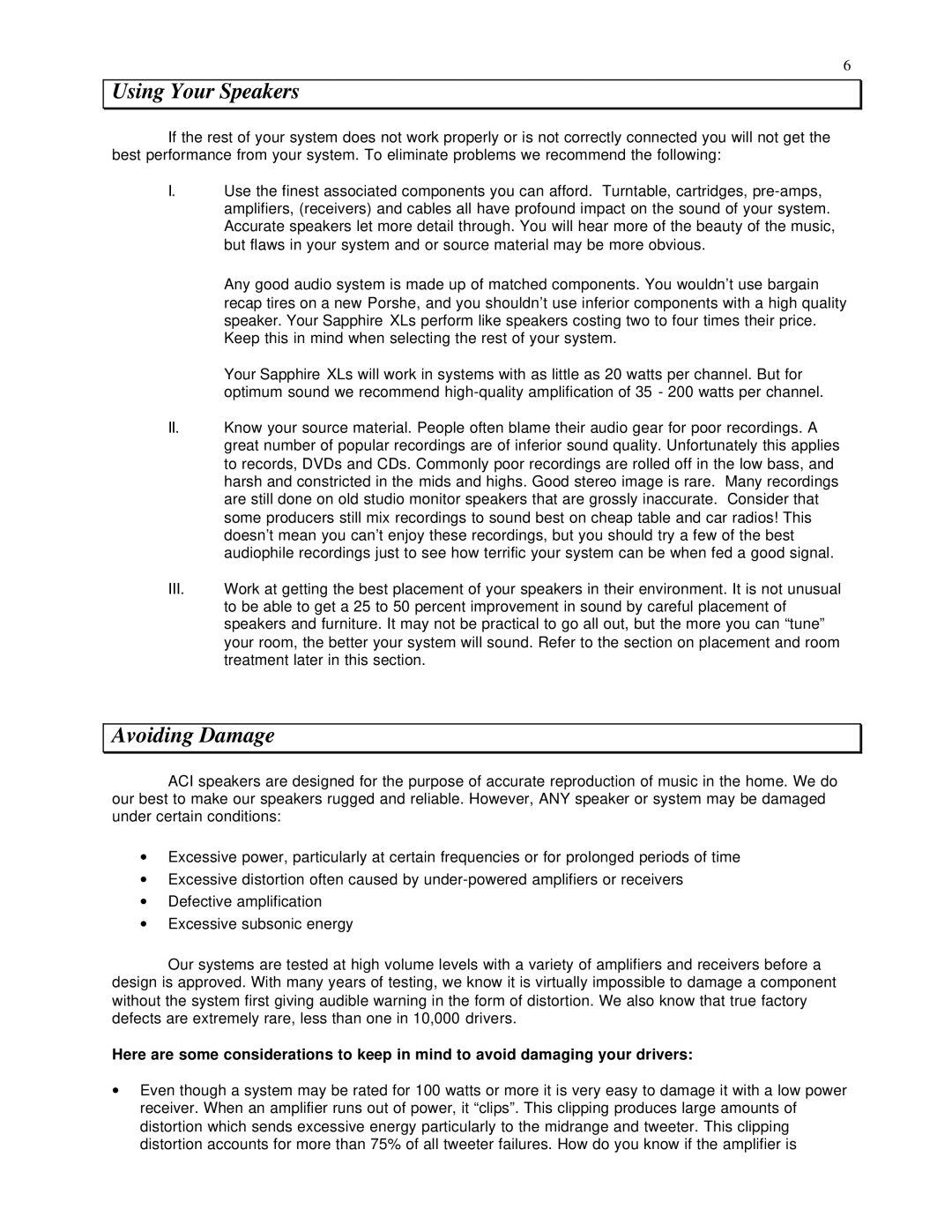Sapphire XLs specifications
Sapphire Audio has made significant strides in the audio industry with its latest release, the Sapphire XLs. These high-performance speakers are engineered to meet the demands of audiophiles and casual listeners alike, providing a stellar audio experience characterized by clarity, depth, and precision.One of the standout features of the Sapphire XLs is their innovative driver technology. The speakers utilize a combination of high-performance woofers and tweeters. The woofers are designed to handle lower frequencies with remarkable efficiency, providing robust bass without distortion. This makes them ideal for various types of music, from classical compositions to modern electronic tracks. The accompanying tweeters ensure that higher frequencies are rendered with crisp detail, allowing vocals and instrumentals to shine. This dual-driver configuration creates a well-balanced sound profile that enhances any listening experience.
Another key characteristic of the Sapphire XLs is their advanced acoustic engineering. The speakers are built with a finely-tuned bass port system, which enhances the low-end response while minimizing unwanted resonance. The result is a tighter, more articulate bass that complements the overall sound signature without overshadowing other elements.
In terms of connectivity, Sapphire Audio has equipped the XLs with versatile input options. The speakers support both wired and wireless connections, featuring Bluetooth capabilities for seamless pairing with smartphones, tablets, and computers. This flexibility allows users to enjoy high-quality sound without the hassle of cables, making the Sapphire XLs an excellent choice for modern audio setups.
Durability and design are also significant considerations in the Sapphire XLs. The speakers are constructed from premium materials, ensuring longevity while maintaining an aesthetically pleasing appearance. With sleek lines and a contemporary finish, they can easily blend into any décor, whether in a home theater or a casual living space.
Sapphire Audio's commitment to sound accuracy is evident in the meticulous calibration of each speaker, which guarantees consistent performance across different environments. The Sapphire XLs also come with customizable EQ settings, allowing users to tweak the sound profile to their personal preferences, further enhancing the listening experience.
In conclusion, the Sapphire XLs stand out in the competitive audio market due to their exceptional sound quality, innovative features, and thoughtful design. Whether you are an audiophile seeking detail-oriented sound or someone looking to elevate their everyday audio experience, the Sapphire XLs deliver a remarkable combination of performance and style.

